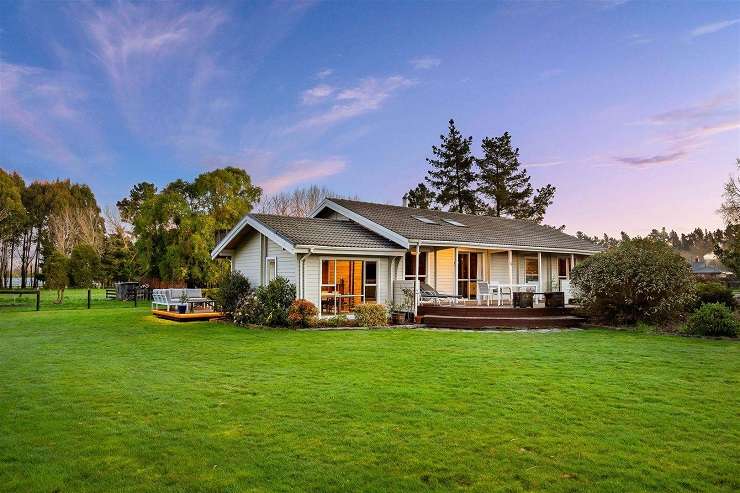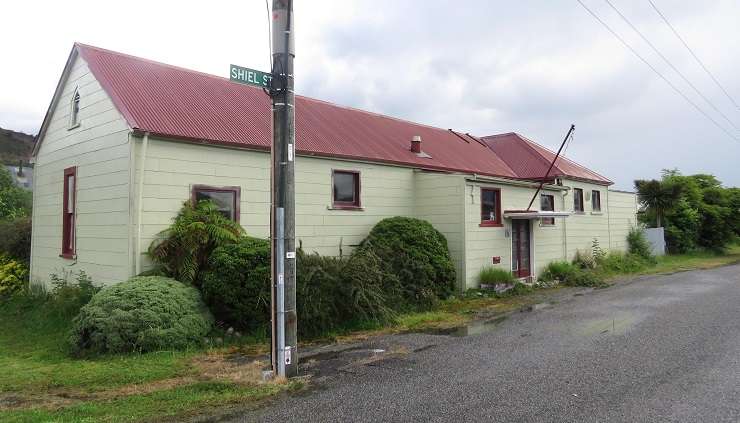The market downturn has eroded the huge house price growth of the recent property boom but some suburbs are managing to beat the slump.
An aggressive rise in interest rates has reduced buyer borrowing power across much of the country, pushing some property values close to pre-pandemic levels.
But the latest OneRoof property value data shows strong price growth in some of the country's most affordable housing markets.
The average property value in 19 suburbs, mostly in West Coast and Southland, jumped by more than 10% in the last 12 months, compared to a 11% value drop nationwide.
Start your property search
The lift added in some cases more than half-a-million dollars to the value of properties.
Leading the growth pack was Manunui, in Ruapehu, which saw its average property value rise 18.4% (+$66,000) to $425,000. Next was Glenorchy, in Queenstown-Lakes. Its average property value was 17.7% (+$229,000) to $1.521 million.
The most expensive "hot" suburb was Speargrass Flat, in Queenstown-Lakes, which now boasts an average property value of $5.446m after benefiting from a year-on-year rise 11.5% (+$560,000).
The cheapest "hot" suburb, on the other hand, was Ohai, in Southland. Its average property value rose by almost 15% year-on-year, but the jump only equated to an extra $22,000, taking it to $170,000.
Of the 1168 New Zealand suburbs that recorded 10 or more settled sales in the last 12 months, just 190, or 16%, saw annual value growth. That stands in stark contrast to last year's figures, when every suburb bar one - Pipitea, in Wellington - saw annual value growth.
Read more:
- How much is your house worth now? Prices tumbling in every region but one
- Revealed: Where the cost of trading up to a bigger home is cheapest
- NZ's cheapest mansion: Grand Christchurch home for sale for just $1
Agents operating in NZ's biggest growth towns gave varying reasons for the surge in property values in their patches but affordability was a common theme.
Tall Poppy agent Tim Burton told OneRoof that sales in Manunui have been steady, with the small town attracting buyers from as far away as Auckland and Tauranga.
“Buyers are generally here for the fishing because Turangi, an hour away, is too expensive,” he said.
Many buyers look to downsize to homes worth around $300,000 to clear their mortgage and have savings left over for their retirement.
Prices have boomed for good properties in higher brackets, though.
“There were a couple of significant sales last year,” Burton said, including a lifestyle block close to the river for $850,000 and a refurbished modern home for $590,000. “Pre-Covid they would have been looking at around $500,000 and$400,000 respectively.”
He said that until the middle of last year, when lending got tougher, most buyers weren’t paying much attention to RVs, but are now back to checking them as they search online.
Typical properties for sale right now include a three-bedroom cottage on a 1000sqm site at 163 Miro Street, asking for offers around $319,000 and a four-bedroom 1940s house on 2024sqm on Taitua Street looking for enquiries over $465,000.
In Glenorchy, Ray White agent Bas Smith is not surprised that the township, a 45-minute drive from Queenstown, has continued to show value growth, now up at $1.521m.
“It’s always been this satellite that follows Queenstown, it goes quiet when Queenstown goes quiet. But this time it’s not experienced much of a downturn,” Smith said.
He said sales last year were boosted by the sale of nine properties in stage three of the 44-section Alfred Terrace development, that were fetching $400,000 – up from the early to mid-$300,000 of earlier sales tranches.
As with the rest of Queenstown, the Glenorchy buyers are typically older and semi-retired, making the lifestyle choice to be closer to the National Park and nature trails, Smith said. Buyers who have had time to do the research over the past years see the village as a more affordable option than buying in luxury developments such as Jacks Point on the other side of Queenstown, where properties can go for over $3m.

Sections at the new development of Alfred Terrace in Glenorchy, north of Queenstown, were fetching around $400,000. Photo / Supplied
An hour south of Queenstown, the village of Lumsden, population around 500, is also enjoying tourist spillover – and housing for workers priced out of the bigger tourist town. Values are up 12.7% on last year to $391,000, and 25 homes have changed hands in the last 12 months.
LJ Hooker agent Peter Richards said that after a slower winter, sales had picked this year. Buyers are a mix of North Islanders and Australians buying houses as a base for fishing holidays and local dairy farmers picking up rental properties for their workers. A third segment, he said, are young tradies who can no longer afford Queenstown prices, so car-pool to their jobs in Jacks Point, 90km away.
“It’s an easy drive from Queenstown airport, we got all the rivers for fishing. While farmers are looking for places for their staff to stay, close to schools,” Richards said.
“A good property, well presented, sells well. Anything $280,000 to $350,000 sells quite comfortably. These are good, comfortable native timber houses.”
A four bedroom bungalow with a sleepout on Hero Street, is asking for enquiries over $495,000.

A three-bedroom home on a large section on Dixons Road, in Loburn Waimakariri, recently sold for $777,000. Photo / Supplied
Richards noted that four years ago sections would sell for $25,000, but now recent land sales have been around $120,000 to $150,000. The much-watched renovation of the town courthouse, and a general tidy up of the main street make Lumsden “a beautiful place to live”, he said.
Across on the West Coast, Property Brokers agent Linda Jones is unsurprised at the 14.1% growth in values for her hometown of Reefton, where values reached $324,000.
“People are starting to see these little towns are where they can live and work. It’s still affordable, and a nice lifestyle,” she said of the town an hour’s drive from either Greymouth or Westport and three hours from Christchurch or Nelson.
As in Manunui, Reefton is attracting buyers from the North Island, downsizers rather than first-home buyers or investors. A recent tidy up of the main street, spearheaded by Dress-Smart co-founder John Bougen (he bought the town’s old school, art gallery and sportsground, a storefront and the old state mines office) has boosted the former gold mining town where a three-bedroom home on a 1000sqm site goes for $300,000 to $350,000.
This year, Jones sold a simple three-bedroom house that needs re-piling for $299,000 while the picturesque former RSA building on Shiel Street, which needs a lot of work, is looking for buyers with over $295,000. At the upper end, a three-bedroom home with outbuildings on 1.62ha on Somerville Road, on the outskirts of town, is looking for buyers with over $735,000.

The former Reefton RSA building on Shiel Street, in the town, is looking for offers over $295,000. Photo / Supplied
“The main street is looking beautiful, the scenery is stunning, we’ve got the cycle trail and tourist routes and fishing. There are two grocery stories, two cafes – Reefton is getting a fair bit of interest.”
By contrast, another top-ten growth town, Loburn in Waimakariri, out of Christchurch, has had a “healthy number” of sales, according to Property Brokers agent Aaron Clarke. Values have gone up by 13% to an average of $1.194m.
The township, out of Rangiora, is beyond the “magic 30 minutes” commute time to Christchurch, but that’s made up for by two really good primary schools and a good high school, Clarke said.
“We’ve been super busy, there are offers everywhere. We’ve sold four sections in beautiful subdivisions for between $350,000 and $545,000.”
He said that lifestyle property buyers like the green landscape and the area attracts horse owners, drawn to places that already have a stable set up.
“$1.2m to $1.4m, that’s the sweet spot. But there are 1970s places you can get for less than that,” he said, pointing to a modern three-bedroom Lockwood-style home on 3778sqm on Dixons Road that went for $777,000 in October and another on the Loburn-Whiterock Road on a smaller 1348sqm section that went for $632,5000.
“People will still drive up from Christchurch. And our Canterbury economy is still strong, with agriculture, low unemployment and a lot of building going on.”
- Click here to find more properties for sale














































































